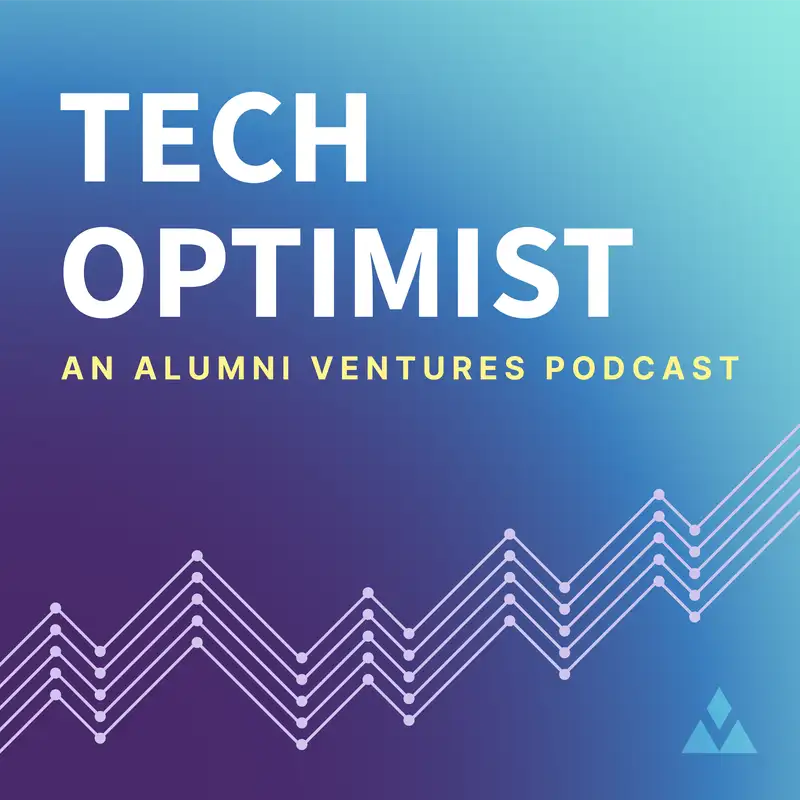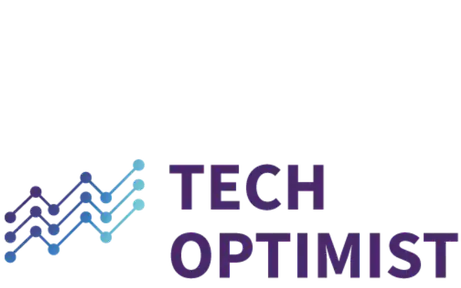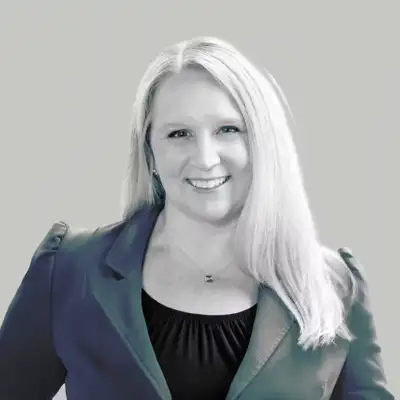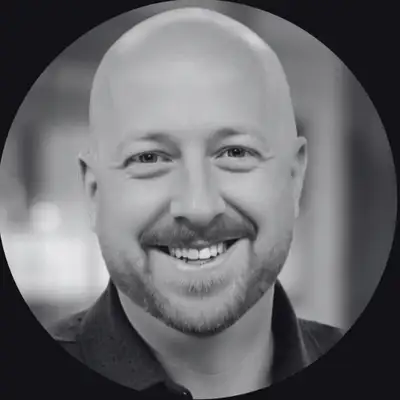#16 - A Discussion on the Future of Knee Replacements
Sam (Narrator) :
My name is Sam and I will be your humble guide through today's episode. Today we're talking about knee replacements. This is the Tech Optimist.
Ben Holmes:
We are endeavoring to develop an implant for more effectively treating trauma and arthritic cartilage loss in younger patients. In fact, the best way to reach this particular patient population will be with a truly off the shelf device. I think that's one of the biggest headaches we've heard from surgeons
Sam (Narrator) :
In a world captivated by criticism, it's easy to overlook the groundbreaking technologies shaping our future. Let's shine a light on innovators who are propelling us forward. As the most active venture capital firm in the U.S, we have an exceptional view of tech's real world impact. Join us as we explore, celebrate, and contribute to the stories of those creating tomorrow. Welcome to the Tech Optimist. As a reminder, the Tech Optimist podcast is for the informational purposes only. It is not personalized advice, and it's not an offer to buy or sell securities. For additional important details, please see the text description accompanying this episode.
Okay, let's dive right into the episode. Mike Collins, CEO here at Alumni Ventures, sits down with Ben Holmes, the CEO behind medical device company, Nano Con. I, Sam, being a podcast producer, know literally nothing about the medical world and medical technology, engineering and innovation, but Ben does a really good job of explaining and articulating what his company's technology is and what their mission is within the medical space. He explains how their knee replacement implant can revolutionize this type of injury. Recovery for surgeons and patients struggling with this debilitating issue that affects hundreds of thousands of people across the globe. Learn more about Nano Con, Ben, their implant and what's on the horizon for them within the medical technology space. Take it away, Mike. Let's get into it.
Mike:
All right, so I am really pleased to speak today with Ben Holmes. He's the CEO of Nano Con, which is doing something that I think a lot of us can relate to, but I'll let Ben explain it. Tell us about your company and the problems it's trying to address.
Ben Holmes:
Yeah, absolutely. And it's really great to be here today, Mike. I appreciate it. Nano Con is an early stage medical device company, which is developing an implant for treating cartilage damage and loss in joints. We're specifically focusing on the knee first because that is the largest clinical need and also the indication which is growing at the fastest rate. Actually the number of total knee replacements that are done annually is growing at an alarming rate. And several years ago, knee replacement actually surpassed hip replacement as the most widely done elective surgery. So it's an enormous problem. And as I'm sure many of your listeners will know, the knee replacement is costly, it's invasive, takes up to a year to recover from, and it's really only a solution for older patients that are not nearly as active as a younger patient population might be.
So when we say active, we are really focusing on a patient cohort that does have substantial damage to their cartilage, whether it's from trauma or from developing arthritis, but are really just too young for a knee replacement to make sense, both because knee replacement has a limited lifespan and also because the expectation for quality of life improvement is much, much higher. So we are endeavoring to develop an implant for more effectively treating trauma and arthritic cartilage loss in younger patients with an implant that really is designed to do a couple things. One, it's designed to really just replace the damaged area. So instead of pulling out the whole joint and replacing it with metal and plastic, you can use our implant to effectively just fill in the areas where the cartilage has degenerated. And especially in joints like the knee, that cartilage degeneration tends to follow the mechanics of the joint, so it ends up presenting as what's called a focal lesion, basically like a pothole in the road.
So we've got something that can fill the pothole. But also the implant itself works with cell populations in the body to actually regenerate new tissue. So we've shown in a number of studies now that you actually get integration with the bone underneath as well as the cartilage layer. So that's really critical for actually getting good, long-term results because right now the stopgap treatments that most of these patients are receiving, that's part of the reason why they fail. The cartilage that grows is not the proper type of cartilage, so it has a kind of weak mechanical character, I guess, is the right way to describe it. It's almost like jello or it's kind of like a goop. It's pretty nasty stuff, but that's how people are being treated today. But that bone continues to degenerate, so rehabbing the bone as well as the cartilage is really key. But then also the implant itself can bear weight immediately.
And so really what that means is that typical in today's treatments, patients will get surgery and then they can't put any weight on their joint at all, so they're walking around in crutches, in a brace for usually a minimum of two months, sometimes it could be up to three months before they can even start rehab, whereas with an implant like ours that's designed to be mechanically stable, they actually can do rehab right away. So we believe that the experience for patients will be not just one of longevity, but also one that is much faster, maybe a period of four to six months maximum to get to a place of being fully healed as opposed to, like I said, up to a year, which is required now for some of these treatments and also certainly for knee replacement.
Ludwig:
Hi, just a brief interruption to introduce you to the health tech fund from Alumni Ventures. Alumni Ventures is one of the most active and best performing VCs in the US and we have raised over a billion dollars from more than 10,000 individual investors. With our health tech fund, you'll have the opportunity to invest in a portfolio of around 20 health tech startups from transformative healthcare services to groundbreaking diagnostics. Our founders are paving the way for a healthier future. To learn more, visit us at AV.VC Backslash funds backslash healthtech.
Mike:
This sounds like a plant, but I was literally out with friends a couple of nights ago, and one of my friends who I hadn't seen in a while was a runner, and I was asking him about his running and, "No, I've had to give up running because of my knee. And it's like, I don't want to have a knee replacement yet, so I've moved to kind of an exercise bike and these non-impact kind of things," And it's like, it was very disappointing to him, and I think he was really looking for alternatives. And it sounds like there is a huge cohort of people that kind of fall into that category, so this is a big problem for sure.
Ben Holmes:
Yeah. Yeah, absolutely. And honestly, I get probably dozens of emails a month of people like your friend that you just described that basically tell exactly that story. I'm whatever age, I've been a lifelong runner or a skier, I like to play pickup basketball, whatever it is, and my joints have gone really bad, and knee replacement will eliminate the pain, but it's going to basically mean I still have to give up everything anyway, so I really want alternatives. So definitely that's something that continues to drive us is that the patients are there and the patients are very much in need of better solutions. So that's really been motivating us the whole time.
Mike:
Where are you in your journey? I mean, this is an early stage company, you're at the of your journey, could you give our listeners a little bit of context of the companies and where are you and where did it come from and where are you in the entrepreneurial journey, Ben?
Ben Holmes:
Yeah, so I'll sort of start where we are today and then work backwards. So we are about to conduct our first human clinical trial. So this is a small safety study. We're talking about enrolling 10 patients. We've already got one of the clinical sites lined up, but we are looking to recruit a second clinical site. But basically this will be the first use of Nano Con's implant in human beings. So that's very, very exciting. We're expecting to be conducting the first surgery in the fall. So assuming that we move through all the gates at an appropriate pace, that we could be doing the first surgery maybe in September. But prior to that, it's really been, and as it is with any invasive implant, there's a lot of preclinical testing you have to do. So we most recently did a study in horses to show the efficacy and the ability of the implant to do the things that we say it can do, and got really phenomenal results there.
Prior to that, we also had done a goat study, so that was sort of the first demonstration of the implant doing anything at all. And then before that, it was really a lot of much more basic R and D. When we founded the company, we'd gotten a small research grant to do a rodent study, so that's the first time that the implant had been used in anything that was living. And also we were looking at different candidate materials as well, so we actually had a couple different technologies that we were looking at. And then going all the way back in time, my co-founder and I originally met and started working on this technology in the tissue engineering lab at George Washington University. So we were both PhD students working broadly on bio-materials and advanced fabrication to try to get cells to grow, primarily working with stem cells and also MSCs, which are a pluripotent cell that's found in bone and responsible for a lot of skeletal tissue remodeling.
And we also had a really keen interest in 3D printing. I guess I didn't really explain what the technology is yet. So we have a nano-material that essentially mimics the collagen structure of cartilage. So it's a fully synthetic polymer material, but it has this collagen like structure, so cells like to attach to it, they like to grow on it, and they kind of grow in a elongated fashion like cells that reside in native cartilage. And then we also 3D print it into this larger, more well-connected three dimensional pore structure. So to be clear, we are not doing 3D printing for patient specific devices. That's on the roadmap for the future, but that's not what we're doing today. In fact, the best way to reach this particular patient population will be with a truly off the shelf device. I think that's one of the biggest headaches we've heard from surgeons. With the existing tissue grafting and cell therapy techniques as they're highly bespoke, they're essentially crafted on a case by case basis with some exceptions, and that's just a huge bottleneck.
So the dream is really to have something that's a fully off the shelf product, but 3D printing allows us to take this very bioactive material that the body likes to grow into and make a truly three dimensional structure in a very efficient and cost effective way. So really, it's a manufacturing strategy to have something that has the complexity that's required to work with biology, but be something that's very easy to scale and turn into a distributable product essentially. So 3D printing has become very manufacturing friendly, all things considered, and we can turn out relatively high volumes of these implants when [inaudible 00:13:06] on the market. So that's also another really important piece of what we're doing, that this is not another attempt to 3D print live material or live cells suspended in a gel. I mean, this really is kind of like a high volume, high throughput approach and a technology that could really be very easy to deploy in a clinical setting.
Mike:
Through the existing systems, in essence.
Ben Holmes:
Yeah.
Mike:
Is there any work to be done in the micro environment there to get the scaffolding to grow better or well beyond the geometry and material choices?
Ben Holmes:
Yeah. I guess if I understand your question correctly, are you talking about adding coatings or other biologics?
Mike:
Yeah. How do you facilitate the growth of cartilage in there or does it just happen naturally or is there anything you can do to accelerate it to fertilize the area if you'll...
Ben Holmes:
Yeah, I gotcha. So it definitely doesn't happen naturally, and I mean that's the big challenge is that cartilage... Many tissues have limited ability to repair, but cartilage has no ability to repair. And the primary reason for that is because there's no blood supplying cartilage. It has no blood vessels. It's essentially an embryonic tissue. So when we all start out as a fetus in the womb, the skeletal system first develops as a network of connective tissue and cartilage, and then that cartilage starts to calcify from the inside out. And so the cartilage surface of joints is really what's left over from that embryonic process. So that's part of why it's so challenging. But the microenvironment of our scaffold of what's 3D printed is designed to basically draw cells up from the bone. And there's other companies that have started to explore this for other types of skeletal tissue. It's been really widely explored for tendon reattachment, and there's a couple of companies that are trying to leverage the same effect for reattaching the rotator cuff to the bone and stuff like that, like shoulder trauma, other types of extremity trauma.
So it's a similar idea. And so really what our implant is designed to do is... We believe there is some migration of [inaudible 00:15:37] out from the cartilage in, but it's primarily MSCs coming up from the bone.
Mike:
Got it.
Ben Holmes:
The most important part of that is you have to prep the defect in order to make the bone bleed, which, again, this is super common. I mean, the most common surgical technique is still something called micro fracture, where you're literally just poking holes in the bone to make it bleed, and people have returned to activity for a couple of years. It's quick and easy to do, but doesn't really have good long-term results. So this scaffold is designed to support cells coming up from that blood, and we've essentially designed a surgical technique and an introducer set, which literally allows the surgeon to just drill through the damaged tissue, drill enough into the bone that you get some bleeding, and then the implant is designed to basically slot into that hole that the surgeon drilled prior. So the bleeding that comes from drilling that hole essentially allows the access to active cell populations that then come up into the implant and repopulate it and then grow into cartilage and bone.
Mike:
You were seeing that in the horses.
Ben Holmes:
Yeah. Yeah. We saw that in the horses. We saw that in the goats previously.
Speaker 5:
Ever wonder how the ultra wealthy invest their money? They often back startups before they go public through venture capital. Now, individual investors like you can too with Alumni Ventures. Visit AV.VC to get started.
Mike:
Does this buy you another five years, 10 years? What are you hoping or are you just going to have to wait and see?
Ben Holmes:
Yeah, so I mean in this space, there's a couple important primary endpoints. I mean, our path through the FDA passed this initial study, which is just a one year safety study will be to do larger multi-arm clinical trial. That's going to require a two year follow up to get FDA approval. And that's the first critical time point because that's when microfracture fails typically. I think an 85% of patients, microfracture fails within two years. So if you can show superior to microfracture, you've already solved an enormous segment of the problem, which is just, what do you do with someone who's coming in for the first time? Beyond that though, things like cadaveric grafting and the cell therapy products have been shown to typically fail within five years. And so that's the other important time point.
There's a little bit more nuance to that, where it's sort of like, okay, there's also this whole cohort of people that kind of includes some of the microfracture patients, it also includes other types of non implantation procedures that are designed to try to smooth out or restore some function of the joint, and then also includes the therapeutics, the tissue grafting all that. And that stuff kind of combined typically fails within five years, and that's when people progress to needing a knee replacement. So, again, there's some nuance to that. You can kind of argue that maybe because they're older patients anyway or what have you. But the point is the five-year time point is the next most important one. So our initial goal here is very measured. It's just to show we're better than microfracture. And so that would allow us to get an indication from the FDA.
Mike:
That's a win.
Ben Holmes:
Yeah. And go on the market. And that's a big win because that's like hundreds of thousands of patients. I mean, if you add up all of the cell therapies and all of the tissue grafting, there's, I think, almost 800,000 knee arthroscopies done every year, and roughly like 30,000 of those are all of the therapeutics and the tissue grafting things combined. Everything else is microfracture or other surgical arthroscopic surgical techniques. So that's already a big segment of the market. But then the ability to open up that longer term benefit comes once they're on the market. So other companies like in the cell therapeutic space have done this where once they're able to enter the market, they then continue to attract patients, and then once they've got an additional couple hundred patients that they've been able to follow for five years, then they can start to market different claims. So that's kind of a longer term goal.
Mike:
That's the playbook. Yeah.
Ben Holmes:
Yeah.
Mike:
What's the ask for our community? How can a listener or a friend of a listener or a friend of a friend of a listener help?
Ben Holmes:
Yeah, I mean, right now we're really just trying to build up our clinical network. So like I said, we're well set up to do this first small study, but we'll be looking to probably start recruiting clinical sites for the Pivotal trial pretty early next year. So right now we're just, again, trying to build a network of potential clinical sites for a Pivotal trial that could be interesting.
Mike:
And what's a great site look like to you? What's the generic? What are you looking for?
Ben Holmes:
Yeah, I mean, definitely somebody in the sports medicine vertical. So this would not be someone who just does a bunch of knee replacements, this would be someone who is an arthroscopic specialist who is seeing this... I'll say everything from a 20-year-old athlete who fell on the soccer field and ripped a big piece of their cartilage off, all the way up to someone who's seeing, again, kind of like your friend, people who maybe could get an early knee replacement but are looking for alternatives. So surgeons that are kind of seeing that range of patients. We're also trying to include some surgeons who maybe work with pro athletes because we also believe because of the ability for really fast rehab and really fast return to sport, we think this could be something that could really show a benefit in the professional athlete community. So again, that wouldn't be the whole focus, but the ability to include some of those types of patients could be really phenomenal. So also anyone who treats pro-athletes I think would be a good addition to the clinical cohorts.
Mike:
But we definitely have all of that. So again, we will, in the show notes, put places where people can reach out with interest or connections there to be helpful.
Ben Holmes:
Perfect. Perfect.
Mike:
Well, again, it's been really nice to meet you. Fascinating. Again, I think I've got maybe five years myself before I'm going to probably be a candidate. I'm just starting to get a little clicking sound in the right knee, so I think it's a matter of time for us ex-athletes to need this kind of stuff. So it was really nice meeting you and continued good luck on your journey. Just love people solving hard problems and taking the journey to make the world a little better. So thanks for your work, Ben, and keep it up.
Ben Holmes:
Yeah, my pleasure. And thanks for taking the time today. It's great to get the story out there and let people know what we're up to, so I appreciate it. Thank you.
Mike:
Excellent. All right. Have a good one.
Ben Holmes:
Perfect.
Mike:
Nice to meet you, Ben.
Ben Holmes:
Nice to meet you too.
Mike:
Yeah.
Ben Holmes:
Yeah.
Mike:
Bye.
Sam (Narrator) :
Thanks again for tuning into The Tech Optimist. If you enjoyed this episode, we'd really appreciate it if you'd give us a rating on whichever podcast app you're using and remember to subscribe to keep up with each episode. The Tech Optimist welcomes any questions, comments, or segment suggestions. So please email us at info@techoptimist.vc with any of those, and be sure to visit our website at av.vc. As always, keep building.








